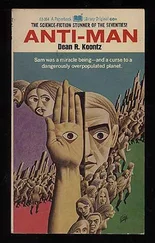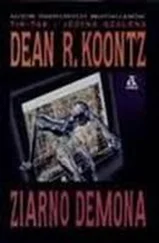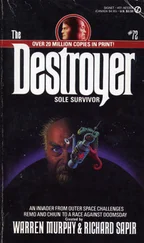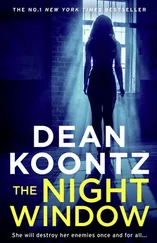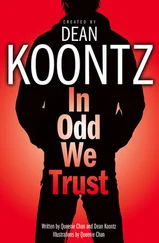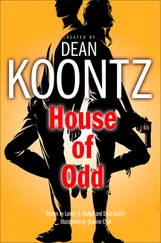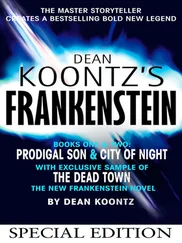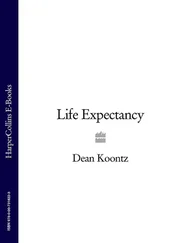His bitterness was a fulcrum and his rage was a long lever with which he would move the world, the whole damn world, to learn the truth, no matter what damage he caused or whom he destroyed in the process.
On a tree-lined residential street, he pulled to the curb. He switched off the engine and got out of the car. He might not have much time before Blick and the others caught up with him.
The queen palms hung dead-limp and whisperless in the heat, which currently seemed to be as effective an embalming medium as a block of fly-trapping amber.
Joe looked under the hood first, but the transponder wasn’t there. He squatted in front of the car and felt along the underside of the bumper. Nothing.
The clatter of a helicopter swelled in the distance, rapidly growing louder.
Groping blindly inside the front wheel well on the passenger side and then along the rocker panel, Joe found only road dirt and grease. Nothing was concealed inside the rear wheel well, either.
The chopper shot out of the north, passing directly overhead at extremely low altitude, no more than fifty feet above the houses. The long graceful fronds of the queen palms shook and whipped in the downdraft.
Joe looked up, alarmed, wondering if the crew of the chopper was looking for him, but his fear was pure paranoia and unjustified. Southbound, the aircraft roared away across the neighbourhood without a pause.
He hadn’t seen any police seal, no lettering or insignia.
The palms shuddered, shivered, then trembled into stillness once more.
Groping again, Joe found the transponder expansion-clamped to the energy absorber behind the Honda’s rear bumper. With batteries, the entire package was the size of a pack of cigarettes. The signal that it sent was inaudible.
It looked harmless.
He placed the device on the pavement, intending to hammer it to pieces with his tyre iron. When a gardener’s truck approached along the street, hauling a fragrant load of shrub prunings and burlap-bundled grass, he decided to toss the still-functioning transponder among the clippings.
Maybe the bastards would waste some time and manpower following the truck to the dump.
In the car again, on the move, he spotted the helicopter a few miles to the south. It was flying in tight circles. Then hovering. Then flying in circles again.
His fear of it had not been groundless. The craft was either over the cemetery or, more likely, above the desert scrub north of the Griffith Observatory, searching for the fugitive woman.
Their resources were impressive.
1
The Los Angeles Times booked more advertising than any newspaper in the United States, churning out fortunes for its owners even in an age when most print media were in decline. It was quartered downtown, in an entire high-rise, which it owned and which covered one city block.
Strictly speaking, the Los Angeles Post was not even in Los Angeles. It occupied an aging four-story building in Sun Valley, near the Burbank Airport, within the metroplex but not within the L.A. city limits.
Instead of a multiple-level underground garage, the Post provided an open lot surrounded by a chain-link fence topped with spirals of razor wire. Rather than a uniformed attendant with a name tag and a welcoming smile, a sullen young man, about nineteen, watched over the ungated entrance from a folding chair under a dirty café umbrella emblazoned with the Cinzano logo. He was listening to rap music on a radio. Head shaved, left nostril pierced by a gold ring, fingernails painted black, dressed in baggy black jeans with one carefully torn knee and a loose black T-shirt with the words FEAR NADA in red across his chest, he looked as if he were assessing the parts value of each arriving car to determine which would bring the most cash if stolen and delivered to a chop shop. In fact, he was checking for an employee sticker on the windshield, ready to direct visitors to on-street parking.
The stickers were replaced every two years, and Joe’s was still valid. Two months after the fall of Flight 353, he had tendered his resignation, but his editor, Caesar Santos, had refused to accept it and had put him on an unpaid leave of absence, guaranteeing him a job when he was ready to return.
He was not ready. He would never be ready. But right now he needed to use the newspaper’s computers and connections.
No money had been spent on the reception lounge: institutional-beige paint, steel chairs with blue vinyl pads, a steel-legged coffee table with a faux-granite Formica top, and two copies of that day’s edition of the Post.
On the walls were simple framed black-and-white photographs by Bill Hannett, the paper’s legendary prize-winning press photographer. Shots of riots, a city in flames, grinning looters running in the streets. Earthquake-cracked avenues, buildings in rubble. A young Hispanic woman jumping to her death from the sixth floor of a burning building. A brooding sky and a Pacific-facing mansion teetering on the edge of ruin on a rain-soaked, sliding hillside. In general, no journalistic enterprise, whether electronic or print, built its reputation or revenues on good news.
Behind the reception counter was Dewey Beemis, the combination receptionist and security guard, who had worked at the Post for over twenty years, since an insanely egotistical billionaire had founded it with the naive and hopeless intention of toppling the politically connected Times from its perch of power and prestige. Originally the paper had been quartered in a new building in Century City, with its public spaces conceived and furnished by the uberdesigner, Steven Chase, at which time Dewey had been only one of several guards and not a receptionist. Even a megalomaniacal billionaire, determined to prevent the dehydration of his pride, grows weary of pouring away money with the tap open wide. Thus the grand offices were traded for more humble space in the valley. The staff had been pared down, and Dewey had hung on by virtue of being the only six-feet-four, bull-necked, plank-shouldered security guard who could type eighty words a minute and claim awesome computer skills.
With the passage of time, the Post had begun to break even. The brilliant and visionary Mr. Chase subsequently designed numerous striking interiors, which were celebrated in Architectural Digest and elsewhere, and then died in spite of his genius and talent, just as the billionaire would one day die in spite of his vast fortune, just as Dewey Beemis would die in spite of his commendable variety of skills and his infectious smile.
‘Joe!’ Dewey said, grinning, rising from his chair, a bearish presence, extending his big hand across the counter.
Joe shook hands. ‘How’re you doing, Dewey?’
‘Carver and Martin both graduated summa cum laude from UCLA in June, one going to law school now, the other medical,’ Dewey gushed, as if this news were only hours old and about to hit the front page of the next day’s Post. Unlike the billionaire who employed him, Dewey’s pride was not in his own accomplishments but in those of his children. ‘My Julie, she finished her second year on scholarship at Yale with a three-point-eight average, and this fall she takes over as editor of the student literary magazine, wants to be a novelist like this Annie Proulx she’s always reading over and over again—’
With the sudden memory of Flight 353 passing through his eyes as obviously as a dimming cloud across a bright moon, Dewey silenced himself, ashamed to have been boasting about his sons and daughter to a man whose children were lost forever.
‘How’s Lena?’ Joe asked, inquiring about Dewey’s wife.
Читать дальше

